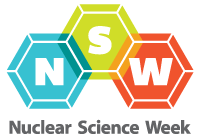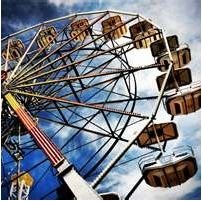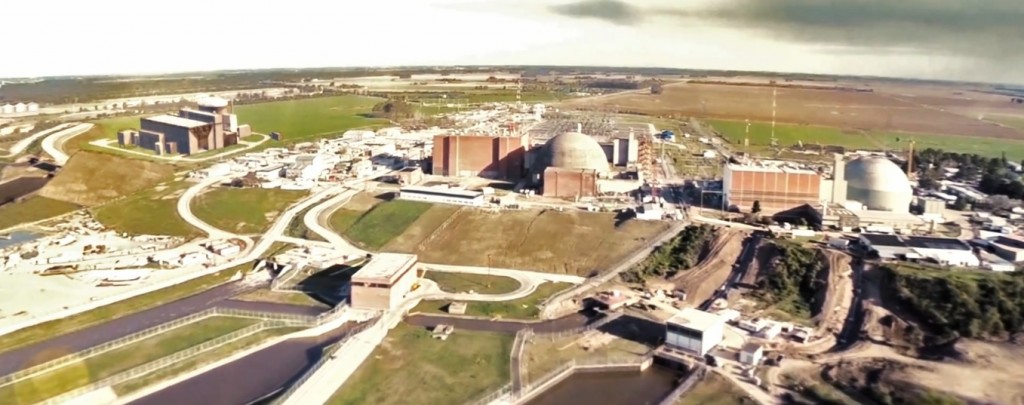"Nuclear Safety" - National Nuclear Science Week, Day 4 (October 23)
 Day 4 of the annual National Nuclear Science week is all about Nuclear Safety.
Day 4 of the annual National Nuclear Science week is all about Nuclear Safety.
The ANS Nuclear Cafe is a blog owned and edited by the American Nuclear Society. Information contained on the ANS Nuclear Cafe has been provided by numerous sources. Therefore, the American Nuclear Society assumes no responsibility or liability for the accuracy of information contained herein. DISCLAIMER: The views expressed in posted articles do not necessarily reflect the views of the American Nuclear Society. The views expressed here are those of the individual authors. ANS takes no ownership of their views. The American Nuclear Society assumes no responsibility or liability for any use or operation of any methods, products, instructions, or ideas contained on this site.

A message from Electrical Builders, Ind.
America’s Top Performing Nuclear Plants Rely on Electrical Builders, Industries to Expand and Extend the Life of Their Critical Electrical Assets
 Day 4 of the annual National Nuclear Science week is all about Nuclear Safety.
Day 4 of the annual National Nuclear Science week is all about Nuclear Safety.
 The third day of National Nuclear Science Week is focused upon the production of energy by nuclear means-and that means energy that can do work for man. Electric power, steam for heating businesses and homes, and mechanical power for propelling ships are perhaps the best known examples of man's use of nuclear energy.
The third day of National Nuclear Science Week is focused upon the production of energy by nuclear means-and that means energy that can do work for man. Electric power, steam for heating businesses and homes, and mechanical power for propelling ships are perhaps the best known examples of man's use of nuclear energy.
 The second day of National Nuclear Science Week promotes the knowledge of careers in nuclear-related fields.
The second day of National Nuclear Science Week promotes the knowledge of careers in nuclear-related fields.
 Monday, October 20, marks the first official day of National Nuclear Science Week-a week long, annual coordinated educational event that promotes nuclear science and technology.
Monday, October 20, marks the first official day of National Nuclear Science Week-a week long, annual coordinated educational event that promotes nuclear science and technology.
• What - American Nuclear Society Winter Meeting 2014
This past week, a remarkable article was printed in The Atlantic, which gave a full first-person account of the initial trial run of the STR Mark I nuclear prototype plant-the plant that paved the way for the success of the first nuclear powered vessel ever built, the submarine USS NAUTILUS.
 The 229th Nuclear Energy Blog Carnival has been posted at Next Big Future.
The 229th Nuclear Energy Blog Carnival has been posted at Next Big Future.
Preface: Robert Rock, a Canadian professional who authored the post you're about to read, is relatively new to the field of nuclear communications but isn't new to communications overall. I believe it's good to get outside perspectives once in a while-they make us think about and reflect upon our own actions. I hope that his piece, specifically written for us here at ANS Nuclear Cafe, can provoke some discussion and help us develop new perspective. Your Editor, Will Davis.
I've been listening to an evangelical group of molten salt reactor enthusiasts for several years. Their pitch is attractive and they often make good arguments about the value of rethinking the light water reactor technology model, but most of the participants are unrealistic about the economic, material, technical, and regulatory barriers that their concepts must overcome before they can serve market needs.
Shortly before midnight on September 26, 1944, a sustained chain reaction was begun for the first time in a nuclear reactor whose purpose was not merely to prove that fission could be achieved or sustained. The brand new reactor at Hanford Engineer Works, Washington state, had only been complete for about a month; its first uranium fuel had begun loading only on September 13. Incredibly, this facility, of a nature that had never been attempted before (as man had only been aware of fission, itself, for less than a decade) was built in the incredible time span of 11 months; ground had been broken to build the reactor building in October 1943.

Atucha I and II at right; artist's concept of Atucha III at left. RIght-most unit is Atucha I. Courtesy Nucleoelectrica Argentina S.A.
Nucleoelectrica Argentina S.A. announced in July that it had entered into a contract with China National Nuclear Corporation to build a Chinese-sourced version of the traditional Canadian CANDU reactor at its Atucha site. This 800-MWe plant will be the fourth at the site (already occupied by two Siemens pressurized heavy water reactor plants, and the just-begun CAREM Small Modular Reactor plant) and the nation's fifth nuclear plant overall (adding in the CANDU plant at Embalse.) This new unit will be Argentina's most powerful nuclear unit, topping Embalse by 200 MWe.
 The 227th Carnival of Nuclear Bloggers and Authors has been published at The Hiroshima Syndrome.
The 227th Carnival of Nuclear Bloggers and Authors has been published at The Hiroshima Syndrome.
• This week the GE-Hitachi ESBWR design received its Design Certification from the Nuclear Regulatory Commission.
In August 2014, the U.S. Nuclear Regulatory Commission approved NUREG-2157, Generic Environmental Impact Statement for Continued Storage of Spent Nuclear Fuel. That action was the end result of several years worth of detailed analysis of the known and uncertain impacts of storing used nuclear fuel on the earth's surface in licensed and monitored facilities.
Nuclear Regulatory Commission Chairman Allison Macfarlane today fielded questions from in-person and virtual attendees at a live, unscripted 60-minute webinar on nuclear energy issues. The event-"Bloggers' Roundtable"-was held in Washington, DC, and was a collaborative effort of the NRC and the American Nuclear Society. The webinar provided an opportunity for nuclear bloggers and social media personalities to discuss the NRC's perspectives on a wide range of nuclear-related issues.
 The 225th Nuclear Energy Blog Carnival is being hosted this week right here at the ANS Nuclear Cafe. Every week, the world's top pro-nuclear authors and bloggers submit the most popular or most important articles from that week; the selections are then compiled at one of a set of rotating sites and featured as the "Carnival." Let's jump right in to this week's significant contributions.
The 225th Nuclear Energy Blog Carnival is being hosted this week right here at the ANS Nuclear Cafe. Every week, the world's top pro-nuclear authors and bloggers submit the most popular or most important articles from that week; the selections are then compiled at one of a set of rotating sites and featured as the "Carnival." Let's jump right in to this week's significant contributions.
I'd like to take this opportunity to ask you a question: Have you considered attending the American Nuclear Society's Winter Meeting yet? Before you answer, I'd like to give you a few compelling reasons to do so from my own personal experience.